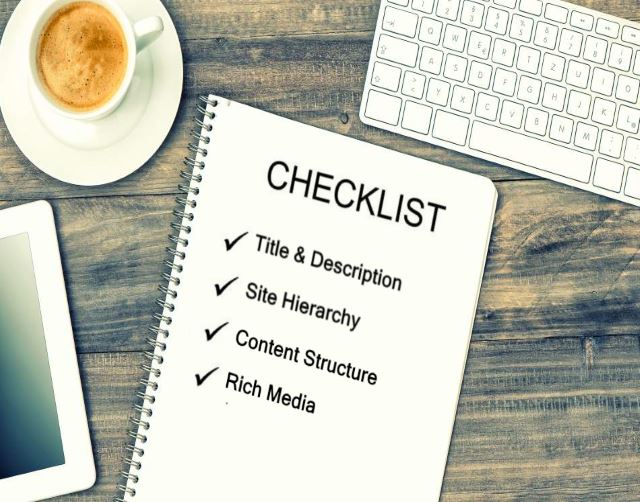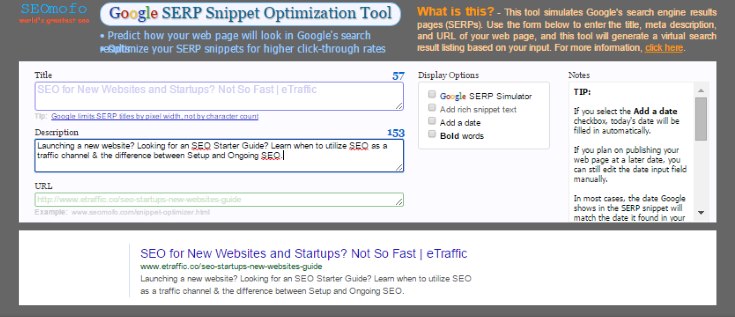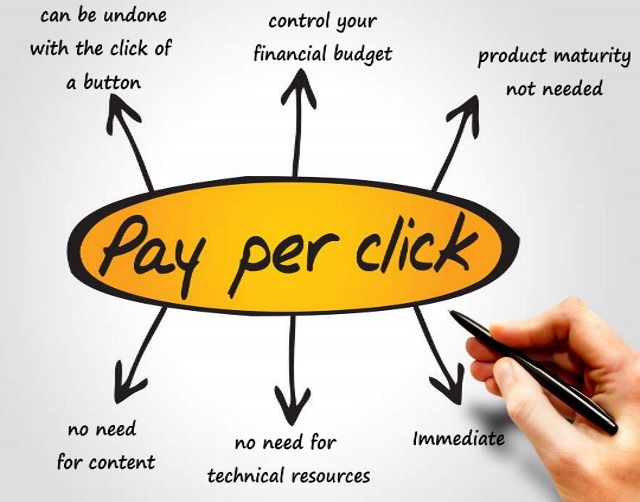SEO for New Websites and Startups? Not So Fast. Learn the Difference Between Setup and Ongoing SEO
Tuesday,
You’ve just launched a new website? You must be thinking – I need SEO!
You do. And you don’t.
You do need to make your site SEO friendly – setup SEO.
You don’t need to start with heavy-duty SEO – ongoing SEO.
This article will cover:
-
Effective traffic channels for early-stage websites and startups
-
Why early-stage websites should consider waiting with ongoing SEO
-
The difference between setup and ongoing SEO
-
When is the right time for ongoing SEO
-
Why SEO is the most effective traffic channel in the long term
You’ve Just Launched Your New Website. Congrats!
What you need right now is traffic. And fast. You have limited time and resources, and no room for mistakes. Your initial analysis should focus on what are the best traffic channels such as:
- PPC
- SEO
- Social
- Content Marketing
- Display Ads
You want to invest in a channel that gives you quick results and can be altered instantaneously. Depending on your product you’ll find that different marketing channels can bring you a better ROI.
So why not jump straight to SEO?
Because of two things mainly: first, the learning curve of understanding your essential SEO keywords is lengthy while the learning curve of “quicker” channels is immediate.
Secondly, alteration of the target SEO keywords takes effort and time, while changing the keywords in PPC or the audience demographics on social is immediate.
SEO Shouldn’t Be Your First Choice for Getting Traffic
There are those industry experts who claim a comprehensive SEO strategy is the first thing to tackle after launching a website or kicking off a startup and we say, not so fast. Here’s why SEO for new websites should be carefully considered:
- You need quick results, but SEO takes time to kick in.
- You may have limited financial resources, and long term SEO ain’t cheap.
- SEO requires product maturity. If you are an early-stage company or a young startup, you are probably not 100% clear on your product, which means: website will change, keywords will change. Bad for ongoing SEO.
- You’ll need to allocate resources for content & technical changes to the website you just finished building.
- You are not ready yet to respond effectively to potential Google ranking algorithm changes. Remember the days we thought pandas and penguins were cute?
- SEO cannot be undone with a click of a button like other traffic channels. If you’ve made a mistake, it will bare harsh consequences with Google.
One exception to the above is that if you’ve got money to spend and resources to use, then by all means SEO is the most valuable and effective traffic channel out there and you can pursue it from day one.
Setup SEO vs. Ongoing SEO
Pretty straightforward – setup SEO is done before site goes live, ongoing SEO is from now till the end of time.
Setup SEO consists of a few key actions that lock and ready your site for the web. Ongoing SEO is a continuous effort to climb higher in the search results page.
Setup SEO is as important as UX or what it says on your homepage. It includes: Title & Description, Site Hierarchy, Content Structure and Media. See more on that below.

Ongoing SEO is step-by-step process that includes keyword analysis, content creation, website exposure, and monitoring & measuring.
The Right Time for Ongoing SEO
PPC, a.k.a. paid search, is a great traffic channel. It works similarly to SEO as they are both based on search keywords and answer the needs of your audience. It is a valuable traffic channel from day one.
PPC can serve as your SEO lab: The lessons you’ll learn in PPC will serve you later in SEO.
Once you’ve learned your PPC lessons you’ll already better understand your users’ needs, which keywords performed and converted best as well as gotten quality traffic to your site.
Other indications that the time is ripe for long term SEO strategy: you have more time and resources, cash inflow, and your product is airtight and ready for the spotlight.
Is SEO Really the Best Traffic Channel? It Sure Is
For the long run, an ongoing SEO plan is the most effective method to get constant traffic to your website.
Ongoing SEO turns your site into a web asset. You want your website to perform on its own, not keep pouring dollars into Google’s pocket, which is what PPC requires you to do. Both SEO and PPC let you understand the market better by analyzing users’ needs and wants and answering them in the most precise way.
But, the fruits of SEO for new websites are considered more objective in the user’s eye and thus generate more quality conversions. SEO gets you untainted respect while PPC generates money-based respect.
Overtime, SEO is significantly cheaper than PPC. Even if you pay an agency to do your SEO maintenance it’s nothing compared to the piles you’ll need in order to keep feeding the PPC monster.

Setup SEO Checklist (SEO Starter Guide)
So, what does a setup SEO checklist entail?
Title & Description
Every page in a website has its own title and description. This basic code elements appear in Google’s search results. Mega important, the tip of all tips. Make sure you hit all the right keywords and provide an intriguing introduction to your site.
You have a double goal here: to romance Google’s stone and to catch the eye of the user. You need to clarify to both, in the most precise and concise manner, what you are all about.
You’ve got 60 characters for title, and 156 characters for description. Crush every single one. You can use this tool for it.

Site Hierarchy
Each keyword group that you target in your SEO effort needs to have its own page on your site. Avoid cluttered pages that cover too much ground. No sense in that.
Since each keyword signifies a different users’ need, the page that corresponds to that keyword should answer the need in the broadest way possible.
Content Structure
Content pages (the pages that target certain keywords) on your site should follow some basic rules. Only one H1 headline per page, other headings should be H2.
These days Google enjoys wordy elaborations so don’t write less than 650 words per page—but it sure does enjoy much more – as long as you have something worthy to say. But please, do not pound the same search terms over and over again; those days are long gone.
And, the top of the page is mighty important. This is your hook, your chance to catch the user’s attention. Make sure it rocks. Because high bounce rate is to Google like stepping on its toe – on purpose.
Rich Media
Google loves media. Images and videos. Can’t get enough of it. Users too by the way. Use it smartly and abundantly.
It doesn’t mean that any ol’ video you embed from YouTube will do the trick. It won’t. If it doesn’t relate to the content on the page, if it doesn’t add value, it shouldn’t be there.
Keep Going on and on about Ongoing SEO
And what does the ongoing SEO process look like?
Keyword Analysis
Remember how we mentioned PPC will serve as your SEO lab? Now is a good time to analyze the results, see what works best, and do further keyword analysis.
You’ll be able to then mix that aspect with new content you wish to produce and set the keywords you wish to conquer.
Content Creation
Any new content needs appropriate title and descriptions, keywords, and appealing images (refer back to the setup SEO checklist above.)
Website Exposure (Link Building)
Website exposure, or link building, is an aspect of web presence optimization which utilizes other online assets and combines it with PR-turned-distribution.
Monitor & Measure
Analyzing the effects of every one of your previous steps through following:
- the rankings of your keywords
- the traffic each page receives
- the quality of the traffic (checking the conversion rate)
These are ongoing steps that repeat. They follow a circular technique and should be taken one step at a time.

Backlink Portfolio – It Takes Two to Tango
As you must know, launching a new website, in a startup environment or not, is a strenuous affair. You definitely can’t focus your attention at this point on responding to the technical issues surrounding the Google algorithm.
There’s definitely a reciprocal relation between your website and Google. It’s like a never-ending tango, and it does take two to tango.
What is crucial to understand is this: Google is not the most patient and understanding partner to tango with. You step on its toe, or you swirl it too hard, it will not smile warmly and tell you that it’s ok. It will most likely stump its nine-inch heel right back on your toe and probably also send its knee to your groin.
Google changes its ranking algorithm and mostly the way he views the backlink portfolio of a site from time to time. Take those Google ranking algorithm changes seriously and avoid those painful punches by responding effectively.
This is why you may want to wait with ongoing SEO as it involves link building.
If not done properly (or done aggressively) link building has the potential to harm your website. If you get penalized, you’ll need time and effort to recover.
PPC: Your Very Own SEO Lab
PPC (Pay Per Click) is the other side of the coin in early-stage traffic. “Those ads at the top of the search page” are a strong source of traffic.
First of all, it is fast. Meaning, you put up an ad and you’ll see traffic immediately. It is Google after all; the most visited destination on earth, the most coveted real estate in the world.
PPC is a valuable, quality traffic channel since it answers users needs. They type a query into the search box and your ad is the answer. It is vastly different than website banners, Facebook ads or popups. They are not served to the user based on ‘general interests’ or recent search history.
Let’s look at the advantages using PPC as an initial traffic channel:

Whatever lessons you learn with PPC, the conclusions you draw about the successful keywords from your user needs can be applied once you start with your ongoing maintenance SEO.
Why in the Long Run PPC Pales in Comparison to SEO
Let’s illustrate our point this way: PPC is like paying rent, SEO is like owning a property and investing in it.
PPC puts you at the top of the search results page. Killer location, amazing view, the elevator doors open right to your living room. The thing is, in case you stop paying Google for this gorgeous penthouse – you are out the door, gone.
A second later a user types those very same keywords, but you are none to be seen. Was it worth it? It sure was. You had a great time and you got massive traffic.
If you were smart you worked hard on your leads and got your conversion rate up, maybe even beefed up your mailing list.
You miss the penthouse, but you’ve made a lot of new friends.

With SEO on the other hand, you build your own web asset. You invest in your own place. And even if it doesn’t have amazing view as the penthouse at the beginning, just keep playing your cards right and the payback will be huge.
SEO can also have a fantastic domino effect. The higher you climb in the search results the more users notice you. The more you are noticed the more you are linked to, quoted, referred to et cetera.
The thing to remember about SEO is this: it is an ongoing process. Think of the lawn – if you don’t water it, it will dry out. If you don’t paint the walls every few years the paint will start to peal. You need to care for your web asset in the same way.
And Finally
We wish you the best in your future endeavors as a startup (or if you’ve launched a new website.) Hopefully we’ve given you some successful tips and basic knowledge of various traffic channels that will help you in your first stages as a web marketer.
by Guy Regev, CEO of eTraffic Web Marketing
